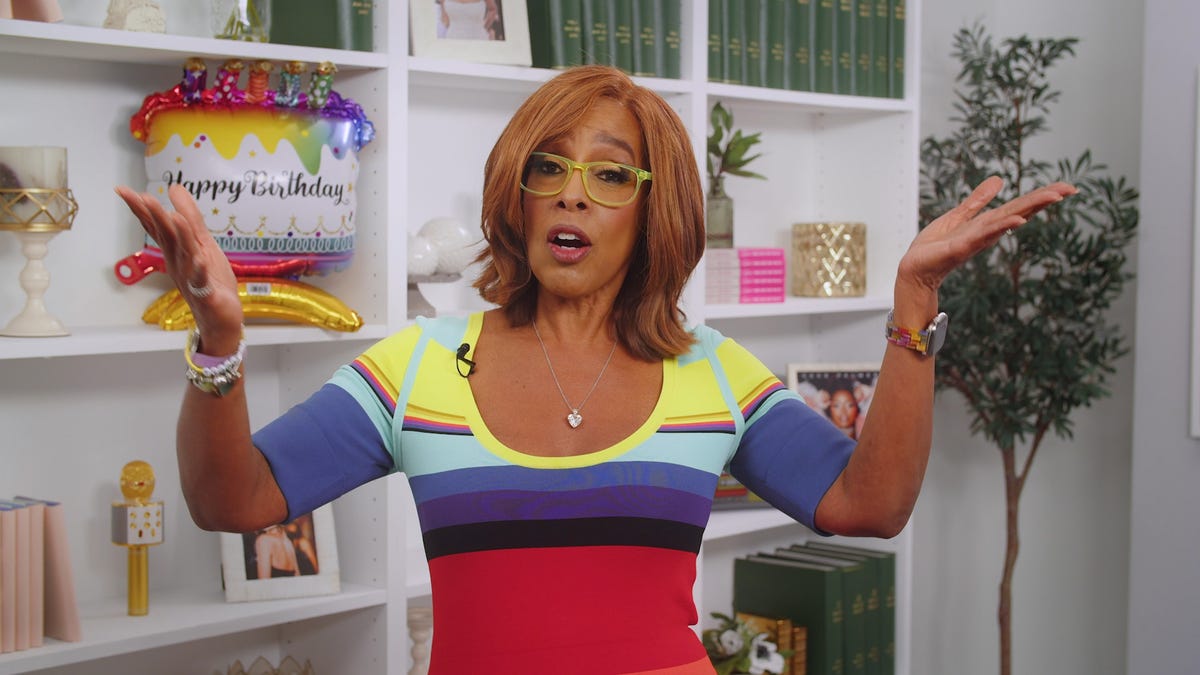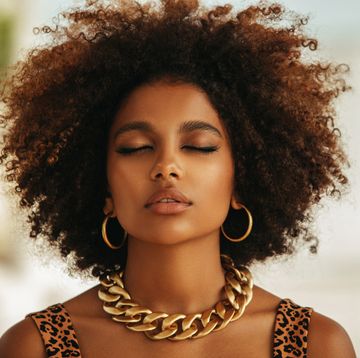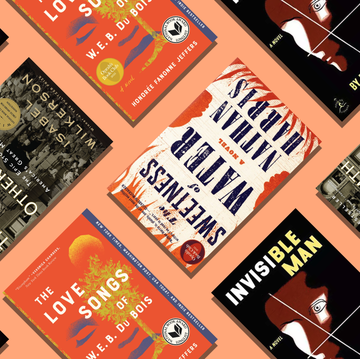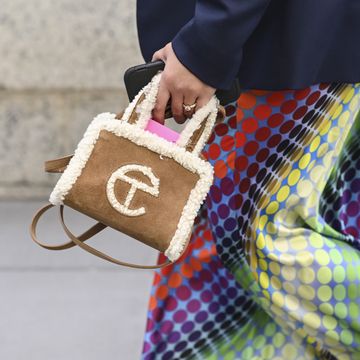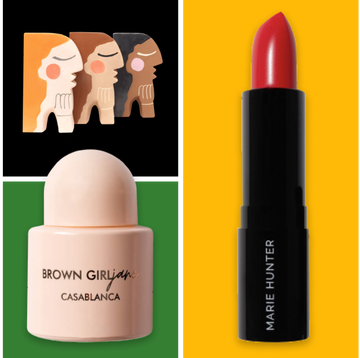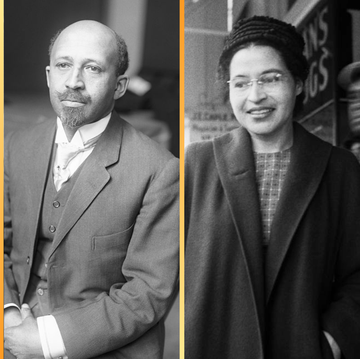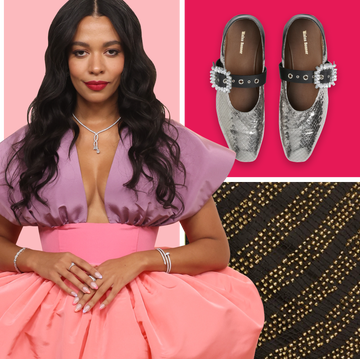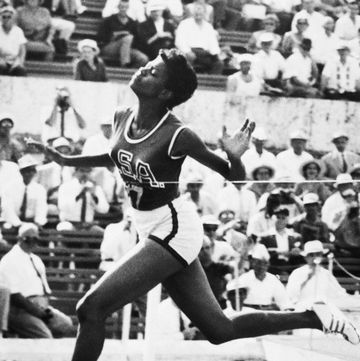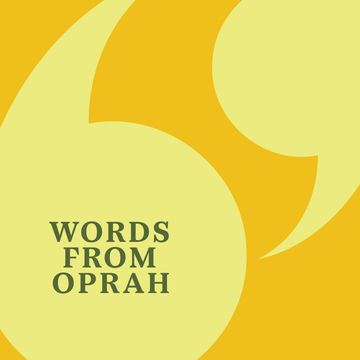- Starring Jodie Turner-Smith and Daniel Kaluuya, Queen and Slim, in theaters November 27, follows a Black couple on the run after they shoot a police officer in an act of self-defense.
- As writer Lena Waithe and director Melina Matsoukas told OprahMag.com, the film is a love letter to the Black community. Even Rihanna gave it her stamp of approval.
- While the soundtrack is phenomenal and the movie is packed with rich symbolism, you'll wonder whether the movie's vivid scenes are based in truth. Here's more on the real stories that inspired the film.
Warning: Queen and Slim is going to wreck you.
In theaters on November 27, writer/actress Lena Waithe (The Chi, Master of None) and director Melina Matsoukas (Beyonce’s “Formation" music video, Insecure) have created a thriller that will get audiences talking about the Black experience in America—and the injustices of racism and police brutality.
The sets are gorgeous, and the titular characters are sexy—Jett’s Jodie Turner-Smith and Black Panther’s Daniel Kaluuya star as Queen and Slim—but it’s the overarching message of the film that will bring on the emotions. Matsoukas says she hopes the film will spark a dialogue and "push the culture forward." And OprahMag.com Digital Director Arianna Davis calls it a “breathtaking” story that will “haunt you for days, maybe even weeks.” Mission accomplished, Matsoukas.
But certain scenes in Queen & Slim are so eerily familiar, they might leave you wondering whether its riveting plot line is based on a true story. So is it? The answer is no—and yes. Ahead, more on the inspiration behind one of the season's most buzzed-about films.
Let's start with the Queen & Slim plot summary.
Without giving spoilers, know that Queen and Slim is devastating in that it immediately feels like a breaking story we'd see any day now at the top of the 6 o’clock evening news. Framed as a love tale, the movie follows Queen and Slim on the night of their first date (she’s reluctant, he’s interested) before a white police officer pulls their vehicle over, citing a traffic violation. Like in George Tillman Jr.'s The Hate U Give, the events quickly escalate. Queen, an attorney, adamantly criticizes the officer’s abusive treatment of Slim, and when the situation escalates, Slim ends up shooting and killing the cop in an act of self-defense. From then on, the duo traverses America on a high-stakes cross-country adventure.
FYI, Queen and Slim is not a remake of Bonnie and Clyde.
The on-the-run plot has reviewers drawing parallels to Bonnie and Clyde. But at a screening and Q&A with Matsoukas in New York, the director spoke of her intentions with the screenplay, explaining the movie honors “Black people who have lost their lives to police brutality,” according to Buzzfeed News. As for those Bonnie and Clyde comparisons, “that’s not really who they are.”
In fact, Matsoukas doesn’t appreciate that B&C reference. “I think it’s a really simplistic and diminishing way to talk about our film,” she told The Los Angeles Times. "I don’t really agree with basing Black films on any white archetype. I think there’s a huge difference in who Queen and Slim are. They’re not criminals on the run, they’re two very human people who have a shared experience that was not their choice. I think that’s a very critical difference between them.”
At various events, both Matsoukas and Waithe have called the film “a meditation on Blackness.” And Waithe told USA Today “it’s almost a battle cry for every Black person we’ve lost from a gun or vigilante’s gun simply because of the fact that they’re Black.”
Queen & Slim is not based on a true story—but it was inspired by real headlines, including the fatal shooting of Trayvon Martin.
We highly recommend watching the film for your own takeaway of the last few moments of the movie, but many of the details are chilling—largely because they mirror the realities of Black life in America today. “Imagine being the family of these people. I didn’t want to disrespect them by trying to give people a Hollywood ending. That’s disrespectful to Emmett Till, to Trayvon Martin, to Sandra Bland, to Mike Brown, to Eric Garner—the list goes on,” Waithe told USA Today.
That list has upsettingly grown since the 2012 death of Martin at age 17, one of the victims of police brutality that inspired the #BlackLivesMatter movement. A resident of Miami Gardens, Florida, Martin was visiting his father, Tracy Martin, after receiving a 10-day suspension from Krop Senior High School. On the night of February 26, an unarmed Martin walked to a local 7-Eleven to purchase Skittles and an Arizona Iced Tea when he was flagged by George Zimmerman, a neighborhood watch captain who called 911 claiming he saw "a suspicious person," as CNN reports. According to 911 tapes, the two embroiled in a wrestling match—one man's cry for help is heard—and Martin was shot dead.
The case sparked the attention of national media outlets after, as Mother Jones points out, headlines suggested Zimmerman was racially profiling Martin. Because of Florida's "stand-your-ground-law," which gives people the freedom to do whatever they must to protect themselves if they believe they're in imminent danger, Zimmerman was eventually found not guilty of second-degree murder and manslaughter, citing self-defense as the reason for firing a gun.
Martin's case led to public outcry and protests, shining a light on controversial cases involving white police officers and the deaths of Black men or teenagers.
In April 2017, for instance, 15-year-old Jordan Edwards (an unarmed football player and straight-A student) died after police officer Roy Oliver fired his rifle into a car of five passengers while investigating reports of underage drinking at a party. According to CNN, his colleague, Balch Springs, Texas Police Chief Jonathan Haber, initially said the car was "aggressively" moving towards him and Oliver, hence the shooting—though he later changed his story to say it was moving away from them. In this situation, CNN reported that Oliver was fired for violating "several departmental policies" and eventually sentenced to 15 years in prison, getting described by Dallas County District Attorney Faith Johnson as a "killer in blue."
As The Los Angeles Times reported in August of 2019, one in 1,000 Black men and boys in the U.S. “can expect to die at the hands of police,” making them 2.5 times more likely to die from a face-to-face interaction with cops than white men and boys, according to a Rutgers University study. Latino men and boys, Black women and girls, Native American men, women, and children are also more susceptible to violence from the authorities. Police violence was also one of the leading causes of death for young men between 2013 and 2018.
So while Queen & Slim isn't based on one single true story in particular, it draws inspiration from incidents like these that are happening far too regularly in this country.
Matsoukas and Waithe’s own lives as Black women also fueled the story.
“One of the key references for me has been real life, authentic struggles in the Black community,” Matsoukas told The Los Angeles Times. “I watched a lot of YouTube videos of Black people being pulled over by the police or encountering law enforcement and it not necessarily ending well. Unfortunately, there are so many of those videos, but they were a major influence in how I wanted to approach shooting the opening scene.”
That was evident in the film, especially when we see Slim kill the cop through a grainy lens that could pass for a YouTube clip. (In the movie, said clip goes viral in the U.S.)
Speaking with OprahMag.com, Kaluuya said he borrowed from his own vantage point as a Black man to bring Slim to life. “I’ve lived it. Since I was 13 years old, probably a bit younger, I’ve known intimately what it’s like to be targeted because of the color of your skin,” he said. “But I don’t think that had happened to Slim to that degree, so there’s an innocence he had, which just made the confusion and fear he experienced after everything all the more impactful.”
Matsoukas tells OprahMag.com that the way women are portrayed in the film was particularly important to her as a director.
"I love our bodies and our beauty and the many shapes they come in—and I also intend to be a part of redefining what beauty is in the Black community," she says. "It was really important that Queen be a dark-skinned woman. I wanted to represent that Black love on screen in that way, and I wanted to represent some of our darker-skinned sisters on screen and honor the many shades of who we are."
Queen and Slim is for everyone—and the ending will leave you reeling.
While it is the creators’ intention to honor Black culture in America (“Black audiences will be reminded that even at our worst, no one will understand the skin we’re in or have our backs like our own,” Davis writes), all audiences are welcome to watch and open up a dialogue about racism and violence.
“Obviously, we made it as a meditation on the Black experience, and I hope that Black audiences really appreciate that it was for them,” Matsoukas told The L.A. Times. “But I also think that in order to create change, we have to make people uncomfortable. So for me, it’s important that everybody sees this and that we create empathy for each other. In order to create change there needs to be real dialogue, and I hope we can be a small part of that conversation.”
For more ways to live your best life plus all things Oprah, sign up for our newsletter!

As the Senior Editor of OprahMag.com, I'm a jack-of-all-trades, overseeing our entertainment coverage (we cover TV shows like The Politician and Big Brother, movies such as J.Lo's Hustlers and Lena Waithe's Queen and Slim), features, news items, and— as her number one fan—all of Lady Gaga's whereabouts. I proudly edit Coming Out, a series where LGBTQ+ change-makers reflect on self-acceptance. And I edit our Weird or Wellness series, which I highly recommend you read on the weekend. Prior to O, I began my career in the fashion department at Marie Claire, and eventually moved on to InStyle, where I dabbled in social media and covered events such as the Grammys, Toronto International Film Festival, and New York Fashion Week. A native of Miami, I received my journalism degree from the University of Miami. One time, Rosario Dawson complimented my hair and asked to touch it. I let her.





